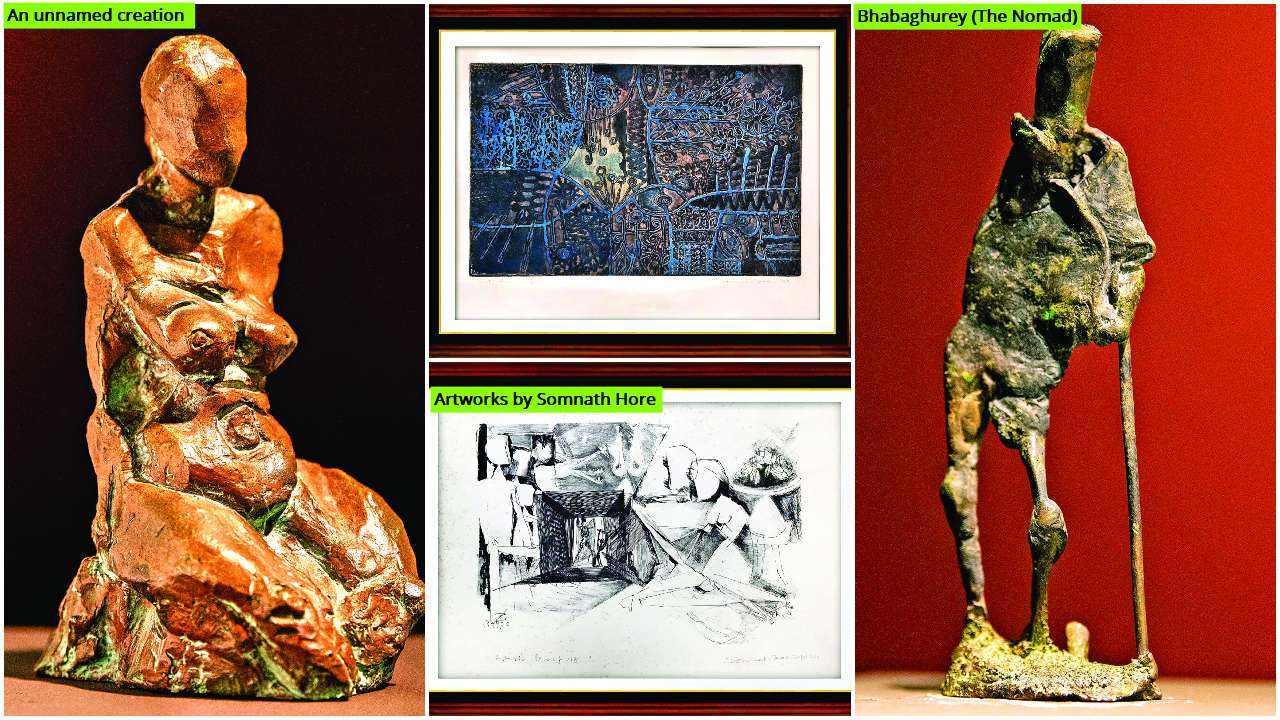
Well-known artist and Padma Bhushan recipient, Somnath Hore, wore many hats. He was a sculptor, printmaker and painter whose works were a comment on the socio-political scenario, specifically the Bengal Famine of 1943 and the Tebhaga movement (the peasant agitation) of 1946. An ongoing exhibition at the Kala Ghoda-based Gallery 7, titled Somnath Hore, showcase the multiple mediums the artist worked with over his life span including sculptures, white-on-white pulp works, lithographs, etchings, colour intaglios, woodcuts, watercolours and sketches.
Arunov Nicholai Sachdev, the owner of Gallery 7, tells After Hrs what inspired him to curate this show.
Somnath Hore, the man as well as his works, have impacted us at Gallery 7 in his own special way. He was the teacher and mentor of my mother, Chandra Sachdev, who is the co-founder and partner of this gallery. The love of art transcended from teacher to student and his influence had an impact in us starting this space. For me, putting his show together was very important. I think he’s by far one of the most significant printmakers and sculptors that the country’s given birth to. Showcasing his entire body of work in his different styles and mediums is a tribute to the legend.

(Somnath Hore)
I joined the gallery at an early age of 16 or 17, and I remember in my initial days, my mother and I had taken a trip to Shantiniketan, where she studied under Somnathda. That is when I met the man and spent the evening with him. His sculptures and etchings have always been a part of our collection. I have grown up seeing his works on our walls.
Somnathda worked with woodcuts, intaglios, bronze, etchings watercolour and other mediums. A few that stood out are his unique White on White Pulp series and The Wounds, which he did in the ’70s and the ’80s. A lot of his sculptures in bronze shed light on the social scene at the time in Bengal. They are beautiful and haunting. He expressed himself through so many different forms that he made his own.
It’s an amalgamation of both. Somnathda came of age as an artist at the time of the peasant unrest in Bengal and they had a major influence on his work. Being a communist, he, in his own silent way, expressed his views, documented their suffering and the emotions of the people through his works. He fought back through art.
It was important for us to showcase the various mediums that Somnathda worked with throughout his life. In terms of timelines, subjects and styles; we have tried to showcase his works through the same medium but in
different years, thereby showing the change in subject and style.
The Nomad bronze sculpture, which was created when Satyajit Ray had made his famous Pather Panchali, depicts an old man walking with his stick. Maybe because it’s a bit different from Dada’s other bronzes on display or the sheer simplicity, it resonated with me.
The exhibition is on till July 26 from 10.30 am to 7 pm at Gallery 7, K Dubash Marg, Kala Ghoda, Mumbai.